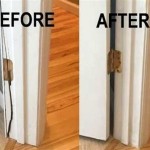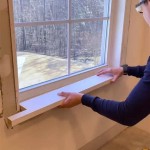How to Repair Deep Scratches on Car Interior Plastic
Deep scratches on car interior plastic can be unsightly and detract from the overall aesthetic appeal of your vehicle. Fortunately, with some patience and the right tools, you can effectively repair these blemishes and restore the plastic to its former glory. This article will guide you through the process of repairing deep scratches on car interior plastic, outlining key steps and techniques for achieving optimal results.
Assessing the Damage
Before embarking on any repair, it's essential to assess the extent of the damage. Carefully examine the scratch to determine its depth, length, and severity. For minor scratches that only affect the surface layer, simple techniques like using a plastic polish or a mild abrasive cleaner may suffice. However, deeper scratches that penetrate the plastic's surface will require more involved repair methods.
If the scratch is deep enough to expose the underlying material or is accompanied by cracks, professional assistance from an automotive upholstery specialist may be recommended. They have access to specialized tools and materials designed for repairing such extensive damage.
Preparing the Surface
Once you have determined the severity of the scratch, you can begin preparing the surface for repair. This involves cleaning the area around the scratch to remove any dirt, debris, or contaminants that may hinder the repair process. Use a mild soap and water solution to clean the surface thoroughly, ensuring all residues are removed. Allow the area to dry completely before proceeding.
For deep scratches, consider using a fine-grit sandpaper (400-600 grit) to smooth out rough edges and create a more even surface for the repair material. Sand gently in a circular motion, avoiding excessive pressure to prevent further damage to the plastic. After sanding, wipe away any remaining dust particles with a clean cloth.
Repairing the Scratch
Several methods can be employed to repair deep scratches on car interior plastic, depending on the severity of the damage and the desired level of finish. Here are some common repair techniques:
1. Applying Plastic Repair Putty
Plastic repair putty is a versatile material that can be used to fill in deep scratches and create a smooth, even surface. Apply a small amount of putty to the scratch, ensuring it fills the gouge completely. Use a putty knife or a small plastic tool to spread the putty evenly and smooth out any uneven edges. Allow the putty to dry completely according to the manufacturer's instructions. Once dried, you can sand the putty smooth using fine-grit sandpaper (1,000-1,500 grit) for a seamless finish.
2. Utilizing Plastic Repair Kits
Plastic repair kits specifically designed for car interiors are readily available in automotive stores and online retailers. These kits typically include a plastic filler, a bonding agent, and several sanding pads. The filler is applied to the scratch, allowed to dry, and then sanded smooth. The bonding agent helps to create a strong bond between the filler and the original plastic. Follow the instructions provided with the kit for optimal results.
3. Employing a Heat Gun
If the scratch is shallow and does not require filling, a heat gun can be used to soften the plastic around the scratch and minimize its appearance. Apply heat to the area surrounding the scratch using a low setting on the heat gun. Avoid overheating the plastic as it can deform or melt. Once the plastic softens, gently rub the scratch using a soft cloth. The heat will help to blend the edges of the scratch, making it less noticeable. Be cautious when using a heat gun as excessive heat can cause damage to the plastic.
Finishing Touches
Once the scratch has been repaired, it's time to apply the finishing touches. This involves sanding the repaired area to achieve a smooth, even surface. Start with a fine-grit sandpaper (1,000-1,500 grit) and gradually increase the grit to 2,000 or higher for a polished finish. Use a circular motion and avoid excessive pressure to prevent damage to the repaired area. Wipe away any dust particles with a clean cloth after sanding.
For a truly professional finish, you can consider using a plastic polish or a sealant to protect the repaired area and restore its shine. Apply the polish to the repaired area using a soft cloth and work it in circular motions. Allow the polish to dry according to the manufacturer's instructions before applying a sealant if desired. The sealant will protect the repaired area from future scratches and wear.

How To Fix Scratched Interior Panels In Your Car Holts

How To Remove A Scuff Mark Or Scratch From Your Car Dashboard
How To Remove Scratches From A Car S Interior Ifixit Repair Guide
How To Remove Scratches From A Car S Interior Ifixit Repair Guide

Here S How You Can Get Rid Of Scratched Plastic In Your Car It So Easy The Sun

How To Remove Scratches From Car Interior Fantastic Services
How To Remove Scratches From A Car S Interior Ifixit Repair Guide
Interior Plastic Scratch Repair Diy How To Honda Odyssey Forum

Fix Scratched Car Interior Trim Panels Easy Remove Scratches
How To Remove Scratches From A Car S Interior Ifixit Repair Guide
Related Posts








